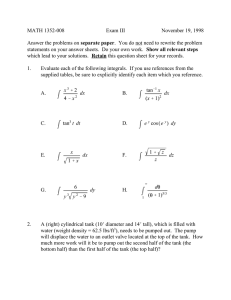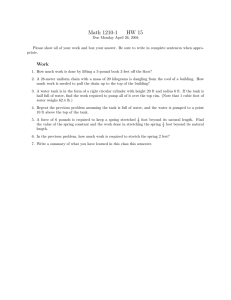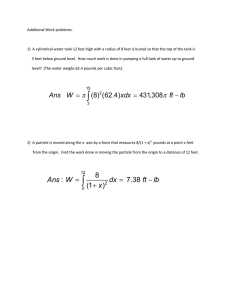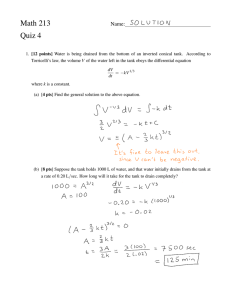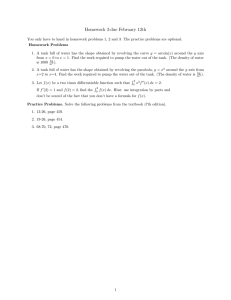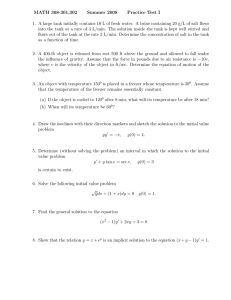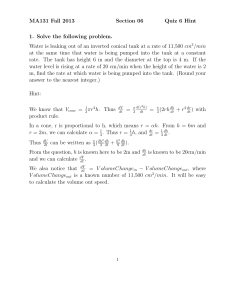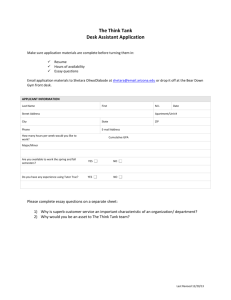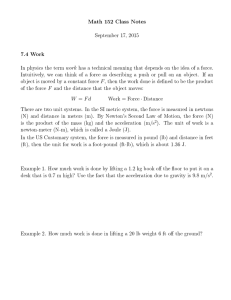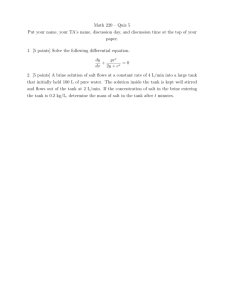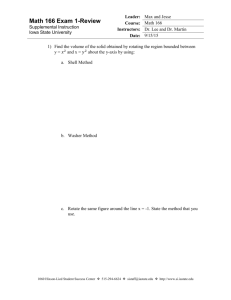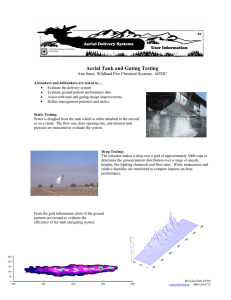1 7.4: Work
advertisement
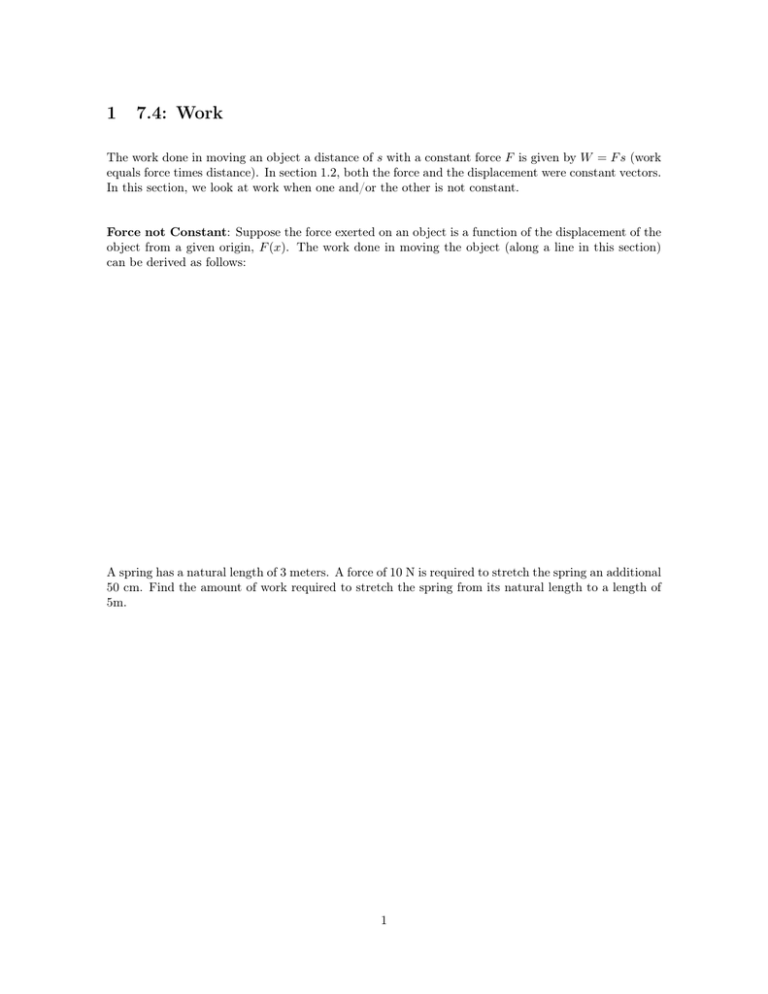
1 7.4: Work The work done in moving an object a distance of s with a constant force F is given by W = F s (work equals force times distance). In section 1.2, both the force and the displacement were constant vectors. In this section, we look at work when one and/or the other is not constant. Force not Constant: Suppose the force exerted on an object is a function of the displacement of the object from a given origin, F (x). The work done in moving the object (along a line in this section) can be derived as follows: A spring has a natural length of 3 meters. A force of 10 N is required to stretch the spring an additional 50 cm. Find the amount of work required to stretch the spring from its natural length to a length of 5m. 1 Distance not Constant (On Beyond Average) A water tank 10 m long has ends the shape of isosceles triangles (vertex down) with height 2m and base at the top 3m. A spout extends 1m above the top of the tank. If the tank is full of water, find the amount of work required to pump all the water out of the tank (call the weight density of water ρg). An 700-lb crate of coal hangs from a cable which weighs 3 lb/ft. Find the work done in pulling the coal out of a 400 ft deep mineshaft. 2
